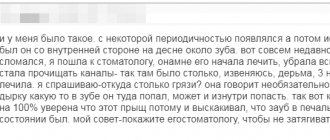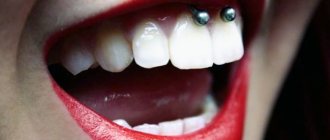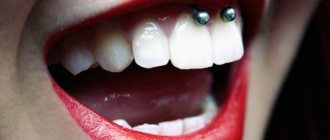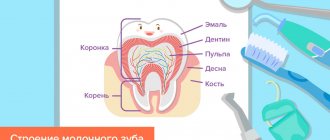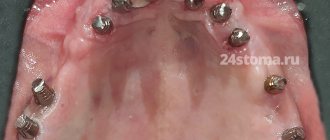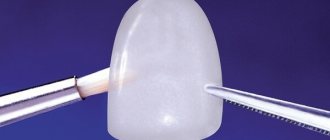general information
Streptodermia refers to a pathology caused by streptococci. If we talk about the external manifestations of the disease, blisters and purulent rashes that itch appear on the skin.
Streptoderma in children can occur in two different forms: acute and chronic. Acute is characterized by pronounced symptoms, and chronic - by periodicity.
According to the degree of damage, the disease is classified into superficial, deep and intertriginous. Each form has a specific feature.
Attention! Danger! Or not?
Examining her baby once again after bathing, feeding, or simply during his quiet sleep, the mother may discover that “something” has appeared on his upper lip. Some will see a watery blister in the very center of the sponge, some will see a small hardened growth, and some will see a dried piece of skin that has already peeled off. If the baby is not bothered by this phenomenon, the neoplasm does not ooze ichor, is not inflamed or red, there is no need to worry or worry.
A callus on the lip of a newborn is a normal physiological condition that occurs in the vast majority of infants and even has a specific medical name.
Symptoms
If streptoderma occurs, what is the treatment? Before we know the treatment options, let's find out the symptoms. The disease in children occurs in extremely severe forms:
- temperature up to 39C,
- poisoning,
- large lymph nodes.
The texture of the skin may vary depending on the form of the pathology:
- Superficial. Initially, red spots form on the skin. After a couple of days they turn into blisters with a certain liquid inside. The blisters grow up to two cm in diameter, after which they rupture. Yellow crusts form in this area. After this, the skin in this area heals, and the pathology develops further.
- Dry streptoderma . This form usually occurs in boys. Light and pink spots up to 5 cm in diameter form on the skin. They are found everywhere on the body. After they disappear, scars may remain.
- Streptococcal infection. The pathology extends specifically to the corners of the lips; it is encountered when there is a deficiency of vitamin B. Small cracks form on the skin, causing discomfort. After some time, they form into pustules that become crusty. The child has difficulty consuming food, as it causes pain.
- Felon. In a situation where streptococcus spreads to the area around the nails, panaritium develops. Oddly enough, this disease is more often encountered by children at an early age who bite their nails.
- Streptococcal diaper rash. This form of pathology is typical for breastfed children. Blisters form in the folds of the skin.
Understanding how streptoderma begins to develop in children, treatment which requires timely contact with a dermatologist and the implementation of therapeutic actions, not a minute can be lost. If you constantly put off going to the doctor, the pathology can develop into a chronic form, and it will be almost impossible to achieve a final cure.
streptoderma, treatment
Thrush in a newborn
With thrush, a white coating with a red rim forms on the baby’s gums, tongue and cheeks. In addition, a rash and redness may appear on the body, and yellowish blisters or blisters on the lips. At the same time, the baby is capricious, refuses to eat, sleeps poorly, and feels discomfort.
In this case, it is also important to improve hygiene, disinfect things and objects that can get into the baby’s mouth. Products are boiled or sterilized for at least twenty minutes. To cure thrush, you can also treat your mouth with a soda solution up to eight times a day. To prepare this remedy, dilute a teaspoon of soda in a glass of boiled warm water.
Stomatitis and thrush can be caused by poor hygiene, too early or incorrect complementary feeding, fungus and thrush on the breasts of a nursing woman. To prevent the development of infection, maintain your hygiene and the hygiene of the mine. Be sure to clean your mouth after each feeding and burping, and remove any remaining milk or food from your baby’s lips. Thoroughly clean and sterilize bottles, nipples, baby dishes, toys and other objects with which the baby has constant contact.
Brush your mouth, tongue and teeth regularly. Up to six months, use special finger wipes or a sterile gauze bandage, after six months they switch to silicone finger brushes, and after a year you can already use a children’s toothbrush with soft bristles. Read more about oral and dental hygiene for a newborn in the article “How to properly brush your child’s teeth.”
Causes
The causative agent of streptoderma, the photo of which you will find below, is group A streptococcus. However, it is worth noting that infection can only develop in a situation where certain factors are present:
- skin damage,
- lack of following basic hygiene rules,
- weak immune system,
- disruption of the endocrine system,
- dermatological diseases,
- depressive mood
- vitamin deficiency,
- constant washing of the skin, which leads to damage to the protective layer,
- strong influence of different temperature ranges,
- poisoning,
- circulatory disorders.
"Milk" callus
In reference books on caring for infants, this problem, which is not a problem at all, is designated as a milk callus. This condition can manifest itself in a child from the first days after birth, or maybe even after a few months - it all depends on several associated factors and the characteristics of the baby himself.
A callus on a newborn's lip appears as a result of the intense work that the baby needs to do just to eat. Active and frequent sucking causes the delicate skin to become injured and swell. The callus may even become watery and become a little rougher over time. Unlike the corns and chafing that adults are used to, which they get when putting on an uncomfortable pair of shoes or after working in the garden without gloves, a “milk” callus does not bring any inconvenience to the baby. Because of her, he will not eat less, much less give up the breast or bottle.
The problem will go away on its own, at most by the time you stop feeding the baby through a bottle or breast. That is, as long as the child sucks a lot, the callus will be present on the lip constantly or appear periodically.
Therapy
Streptoderma has occurred ? Even in cases where the initial examination was carried out by a pediatrician, only a dermatologist can select therapy. Doctors in this field have an understanding of drugs with a narrow scope of action.
The first step is to limit the child’s diet. The course of treatment also involves avoiding water procedures, which can cause the spread of the disease. Healthy areas of the skin should be washed with a solution of chamomile, and damaged areas should not be touched at all.
The sick person needs to choose the right wardrobe, from which items of clothing made from synthetics and wool must be removed.
Doctors advise popping blisters that form on the skin with a disinfected needle, after which the abscess should be drained twice a day. Healthy areas of the skin are washed with a boron solution.
If crusts appear on the skin, they should be treated with antibacterial gels or ointments.
In more complex situations, many other medications may be prescribed:
- antibiotics for streptoderma of the tetracycline or chloramphenicol series,
- means that prevent the occurrence of an allergic reaction,
- means aimed at improving the body's immune system,
- vitamin preparations,
- antipyretic.
The set of medications must be discussed with the doctor. With the right treatment, the symptoms disappear within a week, but after the severe form is eliminated, scars may remain. This is what streptoderma looks like .
what does streptoderma look like?
Diagnostics
You should not self-medicate or try to diagnose your child yourself. Before you begin to treat prickly heat in a child, when the first rash appears, you should contact a pediatric dermatologist or pediatrician. The specialist will conduct an examination and distinguish the pathology from other diseases that are accompanied by a skin rash. For an experienced pediatric specialist, this is not difficult even with an initial visual examination.
In some cases, additional examination is necessary for a comprehensive diagnosis. The doctor may prescribe scraping for pathogenic fungal infections, as well as bacterial culture for microflora.
Causes of complications and re-infection
The reason for re-infection may be incorrect therapy when, for example, if you have primary criteria for improvement, you decide to stop therapy. The most important thing is to remember that you need to unquestioningly follow the advice and instructions of your doctor.
streptoderma complications
Don't miss the real problem
Do not forget that the oral mucosa is one of the first barriers that various types of viruses and infections have to overcome on their way into the human body. Young children are a special risk group; they put everything in their mouths that comes to hand. It is not always possible to surround a child with ideal sterility and cleanliness, especially since this should not be done, because sooner or later he will find himself in completely different conditions, and an unprepared immune system will not be able to cope with the siege of pathogenic organisms.
The most common problems that can arise in children of the first year of life directly in the mouth are thrush and stomatitis. The first disease is the formation of a whitish coating on the mucous membranes; in advanced cases, small ulcers can be found underneath it.
Stomatitis has different symptoms: the mouth, and sometimes the lips, become covered with blisters filled with whitish liquid, and redness and swelling of the tissues are visualized around the blisters. The disease itself is often accompanied by high fever. It is very important not to write off this infection as a normal callus on the lip of a newborn. Photos of “milk” calluses and stomatitis will help you avoid mistakes, as well as take adequate measures when the baby needs real treatment.
source
What can streptoderma be confused with?
Pyoderma
With pyoderma, the sebaceous and sweat glands are damaged. The rash appears in certain areas of the skin - parts of the body, scalp.
Herpetic rash
Herpes is characterized by the presence of blisters with constant inflammatory processes. They burst and provoke development.
Thrush or candidiasis
Candidiasis is characterized by erythematous papules or reddened, wet plaques. In the pathology under consideration, the lesion, as a rule, occurs in the mucous membranes or fold areas.
Manifestations of allergies
An allergic rash continues to occur as long as the influence is the causative agent of the allergy.
Will a bottle save you from calluses?
This, however, does not mean that it is worth limiting the baby’s sucking; moreover, pediatricians do not recommend weaning the baby or switching to mixed feeding before he is 6 months old. A callus on the lip of a newborn with artificial feeding occurs as often as in those babies who eat mother's milk.
If this problem greatly worries parents or the child experiences certain difficulties while eating, you can try changing the nipple on the bottle. The silicone nozzle is more durable and hygienic, but traditional latex is softer and more delicate to the touch, and many children like the tactile sensations after touching it more.
Types of disease
- Streptococcal impetigo. The most common standard form of the disease. A characteristic rash forms on the face, arms and legs. This form is also the most limited, since the pathogen does not move beyond the upper layer of the skin, which has certain protective mechanisms. The appearance of the integument does not change, only individual blisters with liquid appear on the reddened areas. Initially, the patient will experience itching, after which the blisters become darker, which helps the blister to crust over. The duration of this process reaches one week. However, it is worth remembering that if the rash resolves, bacteria are further transferred to healthy areas of the integument, which has its negative consequences for the sick person.
- Bullous impetigo. The rashes are located on the arms and legs and had a fairly impressive diameter. Once the blisters open, these areas of skin develop ulcers that can spread quickly.
- Streptococcal diaper rash. Most of the patients are young children and overweight people. The location of the rash is under the mammary glands, in the axillary folds, intergluteal or inguinal-femoral folds. If you are overweight, the abdominal area is affected.
- Ringworm common. Appears in the form of bright pink rashes. The place of appearance is the face. The rash may become smaller due to exposure to direct sunlight. Those areas of the skin that are affected will not take on a tan like before.
- Streptococcal infection is characterized by the formation of blisters in the corners of the mouth. After the blisters disappear, a crack appears in their place, which in a matter of minutes becomes covered with a yellow crust. It also happens that children tear off the crust, but it forms again.
- Streptococcal ecthyma is the most complex form of the disease. The disease is accompanied by the appearance of characteristic lesions and scars on the arms and legs. In case of development of ecthyma, as a rule, there is a deterioration in health.
Are we going to treat?
So, if you and your baby have had to deal with such an unpleasant phenomenon as a callus on the lip of a newborn, first of all, do not panic. If in doubt and if you want not to leave everything to chance, contact your child’s attending physician; after assessing the situation, he will suggest the correct algorithm of action.
In the vast majority of cases, no treatment will be needed, but delicate skin will not be harmed at all by light moisturizing and nutrition; it is best to use natural olive oil, it will soften the callus and prevent a rough and rough crust from forming in its place.
Some doctors recommend cauterizing a callus on a newborn’s lip with an antiseptic (iodine, brilliant green, furatsilin). Treatment with such means is a controversial and controversial method, because they are quite aggressive in their effects and can cause burns, especially on such a delicate area of the body as the lips. If a blister has burst, the best treatment for the wound is hydrogen peroxide; it will disinfect and dry the hole without further injuring the skin.
Therapy and drugs
Throughout the spread of the disease, basic hygiene rules should be observed: in the first days, it is forbidden to take baths and wet impetigo, and it is forbidden to comb the affected areas.
Therapy for this disease is aimed at destroying the pathogen and strengthening the protective functions of the immune system. As a complex treatment, antibacterial drugs of the category of cephalosporins, macrolides and penicillins are prescribed. If you have bullous streptoderma, you should stop taking medications. As an immunocorrective treatment, the drugs “Likopida”, “Amiksin” and their analogues are effective. Treatment with drugs for . Restoration of microflora in the intestines occurs with the help of probiotics and prebiotics. Appropriate antihistamines will help get rid of scabies.
Means that increase the body’s resistance to infections in the form of solutions - “Eleutherococcus”, “Echinacea”, “Leuzea”, etc.
Sets of vitamin nutrients should also be taken in accordance with the instructions.
Local treatment includes antiseptic drugs that prevent the spread of putrefactive bacteria. Such medications include various alcohols, brilliant green, as well as their analogues - “Fukartsin”, “Chlorhexidine”, “Miramistin”, “Rivanol” or the cauterizing agent “Resorcinol”.
The use of a huge number of zinc-based pastes, preparations and ointments for streptoderma in children with intense scabies.
Treatment
The main method that allows you to remove rashes and cure skin pathologies is hygienic care. It is important to change the diaper immediately after a bowel movement and every three hours, washing the baby with running water. Between shifts you need to give air baths and leave the baby without clothes for a few minutes. At the same time, it is necessary to abandon synthetic clothing and low-quality children's cosmetics.
Bathing is carried out in water with a decoction of medicinal herbs. You can add chamomile, yarrow, and string. After bathing the child, dry thoroughly and powder the skin with powder.
In some cases, the doctor also prescribes treatment of rashes with drying antiseptics (“Furacilin”, “Chlorphilipt”), and creams containing panthenol (“Bepanten”, “Dexpanthenol”). White, red and deep miliaria are treated with antifungal and antibacterial ointments. However, it is not recommended to use any medications without prior consultation with a doctor. Source: Modern dermatological and cosmetic products for caring for the skin of children. Kotlukov V.K., Kuzmenko L.G., Antipova N.V. Medical Council, 2013. p. 8-12.
Doctors recommend setting the air temperature in the nursery at 20-22 degrees and monitoring the humidity, which should not exceed 50-70%. A good solution would be to purchase an air humidifier that will help create the right microclimate. These simple steps can help you get rid of the conditions that increase your risk of developing heat rash.
Preventive measures and prognosis
Due to the high risk of infection, sick children should keep their distance for some time and not contact other people. Quarantine is provided for up to 10 days. For the entire period of therapy, it is necessary to follow the rules of hygiene.
To prevent the development of the disease, it is necessary to disinfect the child’s personal belongings. Sick children should have a proper diet rich in nutrients. To improve the quality of the immune system, certain measures should be taken.
streptoderma treatment
As a rule, streptoderma ICD 10 in children is cured without any problems. Exacerbation of the disease and re-infection are observed mainly in children from disadvantaged families or in children with weak immunity. With timely treatment, symptoms disappear within one week. If you do not attach any importance to this, the disease can develop into a more severe form. In the worst case, the disease can lead to blood poisoning. For streptoderma, treatment with ointments and antibacterial agents is mandatory.
Molluscum contagiosum in children
Molluscum contagiosum is more common in children than in adults. Children up to one year old practically do not get sick with molluscum contagiosum. This is due to the fact that in the first year of life the child’s circle of contacts is small: the child moves in a limited space, often specially prepared for him and under the strict supervision of adults, without trying to come into contact with other children. But as soon as a child begins to actively communicate and independently explore the world, the threat of becoming infected with molluscum contagiosum increases sharply.
The peak incidence of molluscum contagiosum in children occurs between the ages of 2 and 6 years. Immunity at this age is still weak. Children become infected through toys or dirty hands. The virus penetrates the skin in the place where the integrity of the skin is damaged - through wounds, abrasions, cracks. Children's skin is delicate and sensitive, and the activity of a preschool child is great. As a result, numerous microtraumas occur, opening the way for infection. Cases of infection with molluscum contagiosum while swimming in the pool have also been described.
From 6 to 10 years, the incidence of molluscum contagiosum decreases. Instilling household hygiene skills is of great importance. The sooner your child starts taking care of clean hands, the better.
Prevention
To reduce the risk of infection, you should follow the following rules:
- follow the rules of hygiene,
- disinfect damage to the skin,
- strengthen the name system with useful substances,
- do not carry out frequent water procedures, as this may pose a certain danger for the child,
- In case of primary symptoms, you should immediately consult a doctor.
Streptoderma on the face can be treated, but only if you consult a doctor in a timely manner. The earlier therapy was carried out, the easier it is to exclude complications and transition to the chronic stage. You can undergo a full examination in a clinical clinic.
Symptoms
The main and most obvious symptom of the pathology is a rash. Most often, rashes appear on the head, chest, back, groin, armpits, and buttocks. The rash appears as scattered blisters with clear, white or yellow contents, or as small grains with an inflammatory outline.
During the day, the rash may intensify or decrease, and the severity of its manifestation depends on changes in temperature and care for the baby’s skin. In some cases, the child does not show concern, but sometimes may experience itching, pain and demonstrate discomfort with whims, unstable sleep, and lack of appetite.
In mild forms of the disease, other symptoms may not occur. But in more advanced cases, which are accompanied by complications and infection, clinical manifestations may be supplemented by:
- elevated temperature up to 38 degrees;
- the appearance of light plaque, ulcers, ulcers;
- the formation of weeping cracks with an unpleasant odor;
- general deterioration of condition.
When assessing symptoms, it is important to prevent the development of advanced forms of prickly heat and consult a doctor promptly, without waiting for complications to develop. Source: Skin care for a newborn. Solntseva O.A. Medical Council, 2014. p. 35-39.
How to get rid of a callus on the upper lip of a baby?
If the callus was formed from active sucking, there is no need to get rid of it. It is better to calm down and switch your attention to another topic. After a few days, the milk callus will harden and fall off, and the place where it is attached to the baby’s skin will remain undamaged. Or it will disappear when the pressure on the lip stops.
It is strictly forbidden to pierce the callus or tear off dried skin from the area where it is located if the cause of its appearance is friction against the nipple or pacifier during feeding. Such actions increase the risk of infection in the wound and the development of a serious illness.
If there are blisters due to stomatitis in a baby, thrush or herpes, parents should act as follows: (more details in the article: how and how is thrush in the mouth of a baby treated?)
- You should carefully examine the baby’s oral cavity for the presence of white plaque on the tongue, ulcers on the palate, cheeks, tongue (we recommend reading: white coating on the tongue of a newborn during breastfeeding);
- pay attention to the appearance of the blisters - the color of the edge (white, yellow or gray) and the middle of the formation (red);
- treat the areas affected by white plaque with a weak solution of baking soda for thrush;
- go for a consultation with a pediatrician to make a diagnosis and select effective medications;
- follow the doctor’s instructions - wash the affected areas with antiseptic drugs, apply antiviral creams or ointments;
- pay increased attention to the baby’s hygiene rules and the cleanliness of the space in which he lives;
- monitor the baby’s movements so that he does not tear the blisters, thereby provoking deeper penetration of the infection.
What signs should you sound the alarm about?
A callus on a baby’s lip may be a signal of the development of a viral infection if:
- the color of the contents of the blister has changed to yellow or gray, the contours of the callus have become red;
- the area around the formation is swollen and red;
- the child refuses food, is capricious, cries, and the body temperature rises;
- The baby has an unpleasant odor from his mouth.
Diseases that require consultation with a doctor are herpes, stomatitis and thrush. Each of them has its own specific symptoms:
- With stomatitis, the mucous membranes of the oral cavity are affected - cheeks, tongue, palate. Blisters and ulcers appear on them, which cause anxiety and pain to the baby. Infants are diagnosed with an infectious type of stomatitis. The reasons for its appearance are the weakened immunity of the child, violations of hygiene rules.
- With thrush, in addition to a calloused formation on the lip, a white coating appears on the tongue. After wiping it with a bandage soaked in a weak aqueous solution of soda, small ulcers remain, often with bloody discharge. The callus on the lip changes color to yellow, is covered with thickened skin with redness around the perimeter.
- Herpes is a disease of hereditary nature (see also: herpes in a child: photo of rashes). The virus is transmitted through blood from mother to child. Activates after the baby becomes hypothermic. Blisters differ from milk calluses in color - the liquid inside is yellowish. After they burst, the ulcers take a long time to heal, causing discomfort to the child with their itching. If timely treatment is not started, the virus spreads throughout the body and affects increasingly large areas of the baby’s skin.
Herpes on the upper lip of a baby
What to do
As mentioned above, a milk callus on the upper lip of a newborn is not dangerous and most often heals itself. If parents are still worried about it, then they need to draw the attention of the pediatrician to the neoplasm at the next examination. The doctor may recommend treating the chafed area twice a day with antiseptics (3% hydrogen peroxide solution, furatsilin solution).
It is strictly forbidden to independently open a baby’s callus, rip off the skin, apply any alcohol solutions to the callus, including lubricating it with brilliant green, iodine or fucarcin, or use traditional methods, since herbs often cause severe allergies in infants.
Treatment of herpes, infectious stomatitis or thrush must be carried out under the supervision of a pediatrician. Parents should understand that self-medication using grandmother’s methods will not only delay recovery, but can cause serious complications in the child. At the same time, you need to wash all the toys and objects that the baby touches with soap, boil his dishes, wash his clothes and bedding, and do wet cleaning in the house. It is very important to maintain the personal hygiene of the baby. The pediatrician may suggest examining other family members to determine the source of the infection.
